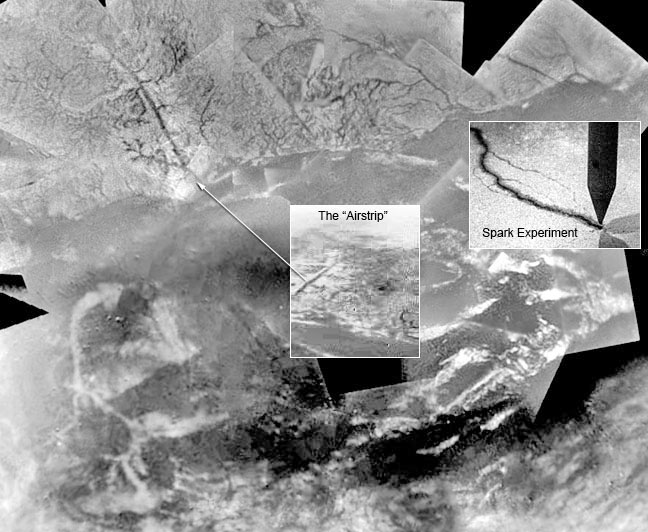|
Jan 18, 2005 from Thuntherbolts Website
Credit: ESA/NASA/Univ. of Arizona Jakub Friedl combined the Huygens mosaics
The dark channels
in the mosaic image above bring to mind similar patterns in high
altitude images of river systems on Earth. But a closer inspection
uncovers details that are more characteristic of electrical
flows than of liquid flows. And not unexpectedly, these
channels are indistinguishable from channels on Mars,
Venus, the Moon and most other solid
bodies in the solar system. All of these channels are the result of
cosmic electrical scarring.
The tributary channels of the “airstrip” are stubby and have no feeder channels.
They begin
abruptly and tend to join the main channel at near right angles. And
as they join it, the main channel does not broaden: Common liquids
are incompressible, and an increased volume requires a larger
channel. But electrical "flows" can increase their current density
in a constant channel size.
And once again we see stubby tributaries that join other
channels preferentially at near right angles. The "lake" also shows
evidence of dark filamentary scarring, and the "shoreline" shows a
larger-scale arcuate scalloping typical of electrical etching.
Marty Tomasko, the Principal Investigator for the Descent Imager Spectral Radiometer, suggested that it might be due to a methane fog hugging the “shore.”
The electrical model suggests
an alternative - the brightening may be due to steep cliffs along
the “shoreline,” where electrical etching has exposed lighter
material.
In doing so we must be prepared to discard the old fables
we have been taught about the history of Titan, Saturn and the
solar
system.
|
